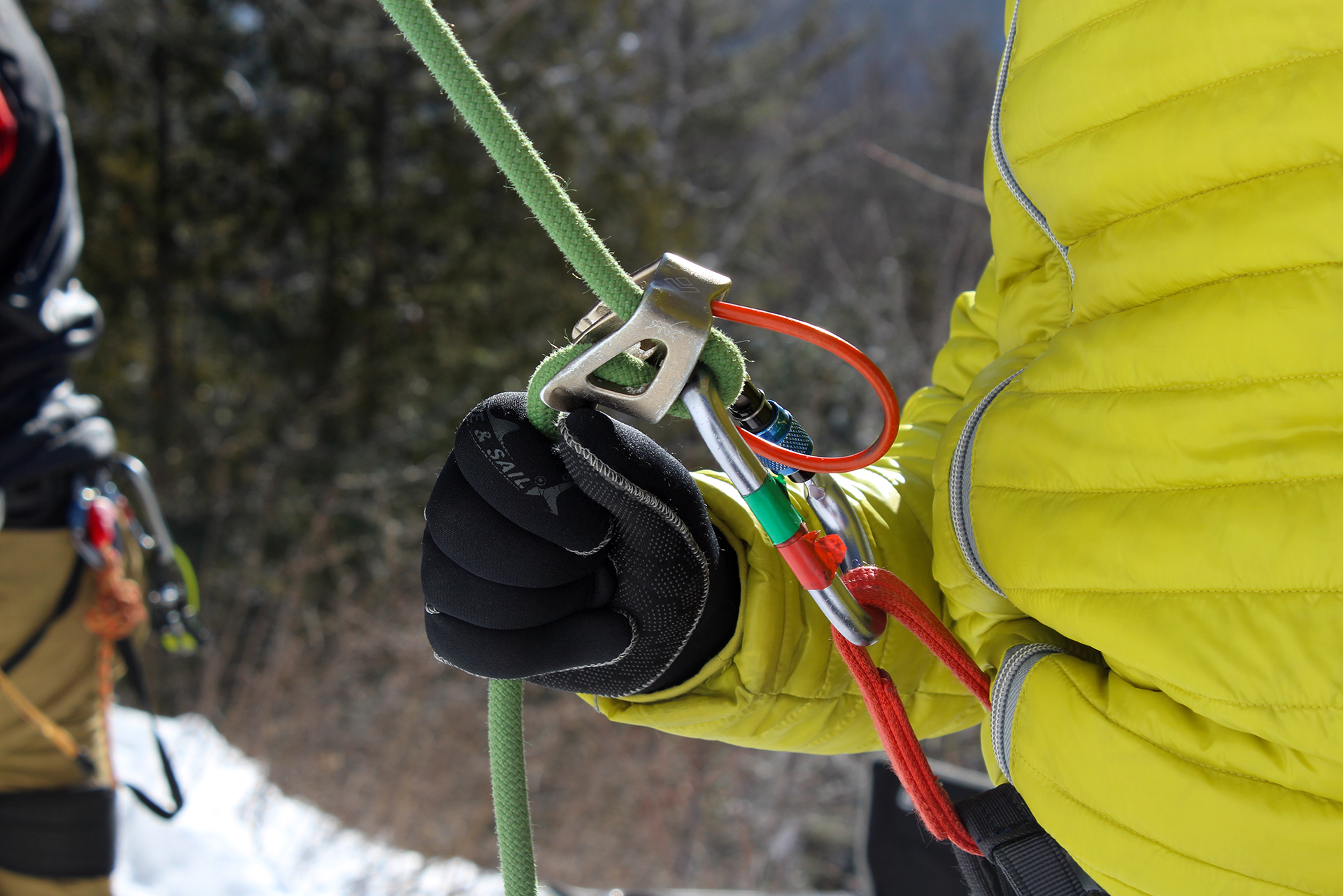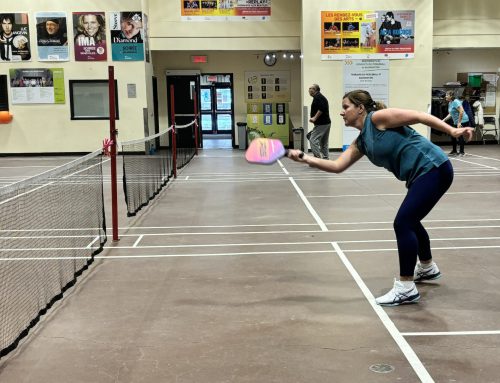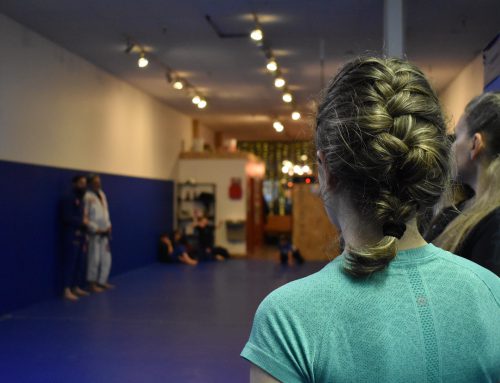BY Olivia Piché & Alexi Dubois
Like many, competitive taekwondo athlete Molly Hotson has seen her physical activity regimen change over the past two years. Those changes came after pandemic-related health and safety protocols created new barriers to physical activity. However, Hotson has found ways to remain active.
“Being able to stick to 70 per cent of my training plan was really great for my mental health because there’s a significant amount that feels familiar. It’s grounding,” says Hotson on the advantages of keeping up with some of her training.
Unable to compete in national and international taekwondo competitions as she normally would, Hotson has instead put most of her energy into running. She says it’s a sport she feels lucky to have taken up at a young age.
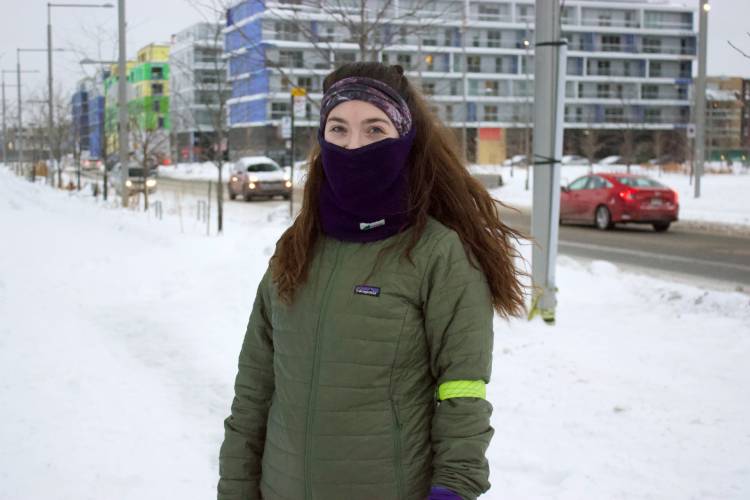
Molly Hotson, pictured, turned to running when pandemic restrictions cancelled her taekwondo competitions. Photo by Olivia Piché.
“I think my total mileage of the year prior to the pandemic was maybe 600, almost 700 km. In 2020 I did 1,000 km and in 2021 I did 1,100 km. I’m aiming for 1,200 km this year,” she says. “I went back to running just to keep my conditioning up, with the spirit that when things are back in action at least I’ll still be in shape and won’t have too much catching up to do.”
Along with staying in shape, Hotson says running has allowed her mental wellness to benefit as well.
“Because I work from home, I will often feel like it’s good to have a reason to get out of the house as a benefit and just being able to be outdoors is great,” she says.
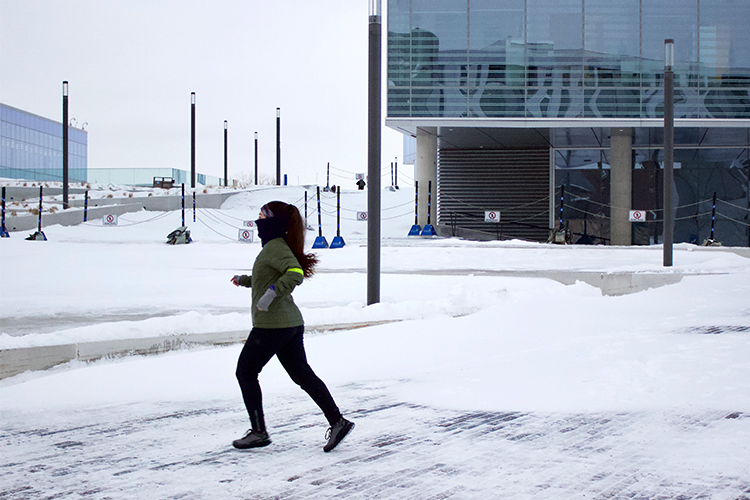
Runner and competitive taekwondo athlete, Molly Hotson, keeps up with her conditioning routine. Photo by Olivia Piché.
According to the Centers of Disease Control and Prevention, physical exercise can reduce the risk of cardiovascular diseases, type 2 diabetes, and cancer. It also helps you sleep better, and reduces the risks of depression and anxiety.
Professor of behavioural medicine Dr. Simon Bacon says in order to reap the benefits of physical activity we may not need as much of it as we think we do.
“There’s a great mantra in regards to physical activity and it holds very true: something is better than nothing, more is better than less,” Bacon says.
Bacon says he dislikes the Canadian guidelines for physical activity that suggest adults need at least 150 minutes of physical activity per week to achieve benefits. He believes this number can be discouraging and people may miss the point if they focus on it.
“If you’re doing 10 more minutes of physical activity next week than you did this week, that is beneficial,” he says. “If you can put that up to 20 minutes and progress, even if you never get to 150 minutes, you are going to be better off.”
While it’s beneficial to devote a large portion of time to physical activity, Bacon acknowledges that this isn’t always accessible. He suggests incorporating small movements into our days. Getting off the elevator a few floors early and taking the stairs, purposefully parking far away from the entrance, and having devices that remind you when you have been inactive for a long period of time can all help make a difference.
Prolonged daily sitting time can be associated with cardiovascular problems and type 2 diabetes. It has also been linked to cancer. But replacing it with physical activity can reverse the negative effects of sedentary behaviours.
For those who have not been able to remain active during the pandemic, Bacon says the benefits of physical activity simply depend on when you choose to start.
“Anytime is a good time to start being active,” he says.
While COVID-19 restrictions have created new barriers to being physically active, incorporating small movements and getting creative with how you move your body have remained options. Some people like Hotson have taken their workouts outside. They’ve been able to continue moving their bodies year-round, even with winter conditions.
Montrealers are finding innovative ways of keeping active during the winter. Video by Alexi Dubois.
“I always tell people, ‘I promise it’s not bad once you get out there and you’re warm,’” Hotson says.
Bundled in layers of quick-dry clothing, armed with winter running shoes, and decorated in blinking lights for the early sunsets, Hotson says she has never regretted getting outside and going for a run.
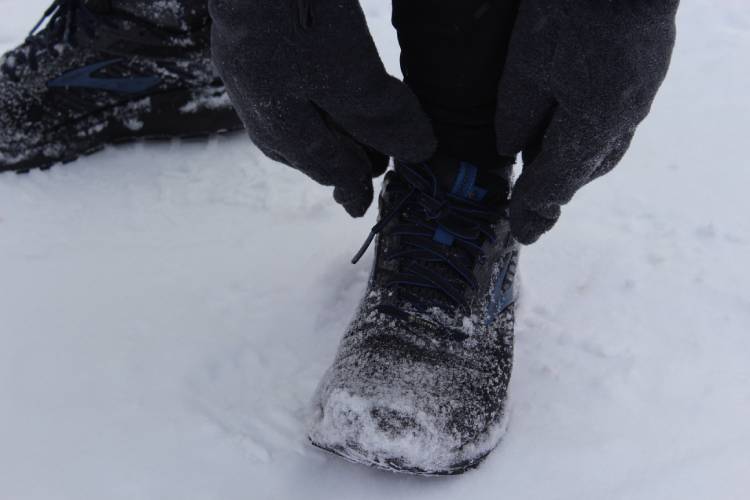
Taking part in outdoor winter activities requires some extra planning. Runners must wear an adequate amount of layers and proper shoes. Photo by Alexi Dubois.
However, running in extreme cold for long periods of time can be dangerous. Many prefer to keep up with their health and fitness with simple outdoor walks or at-home workouts.
With six months of sobriety under her belt and a newfound desire to take care of herself, Marie-Claude Bélanger was left to find alternative ways to remain active when the first closure of gyms was announced in 2020.
Alongside her roommate at the time the pair threw themselves into a military-like regimen of high-intensity workouts.
“I worked out every day. Everyday is a little too much, but I don’t regret it. It really did me some good under those circumstances,” Bélanger says.
Bélanger says she and her roommate started to exercise in order to relieve stress, make sure they didn’t gain weight, and as a way to remain motivated.
“For me, it was really to keep me busy. I was sober for six months and I really didn’t want to start drinking again so I told myself ‘I have to workout.’ It was my way of keeping my sanity, to not relapse. That was really the base for me,” she says.
Ankitaa Rajaa, a caseworker for West-Central Montreal’s Mental Health and Addiction Program, explains how physical activity is directly linked to diminishing the chances of relapsing into bad habits.
“If we look at the reasons for relapsing, most relapses are brought about by triggers,” she says. Rajaa says that a change in lifestyle, such as becoming more physically active, can lessen the risk of triggering a relapse.
“You avoid negative behaviours because you have a good feeling in your body. You have established a good lifestyle, so you want to keep up with that,” she says.
She explains having an adaptive and progressive exercise routine “may bring more self-discipline, a change of perspective, and a sense of control also that you can change something in your life.”
When it comes to her patients working towards a healthier lifestyle, Rajaa says she often sees patients drop other bad habits.
“When you start using a healthy replacement, you drop on the [unhealthy replacement],” she says.
With her continuous dedication and desire for health, Bélanger also decided to quit smoking during the pandemic and really saw a need to use exercise as a tool to help.
“I had an enormous amount of anxiety when I stopped smoking, so it was important for me to spend my energy by being active,” she says.
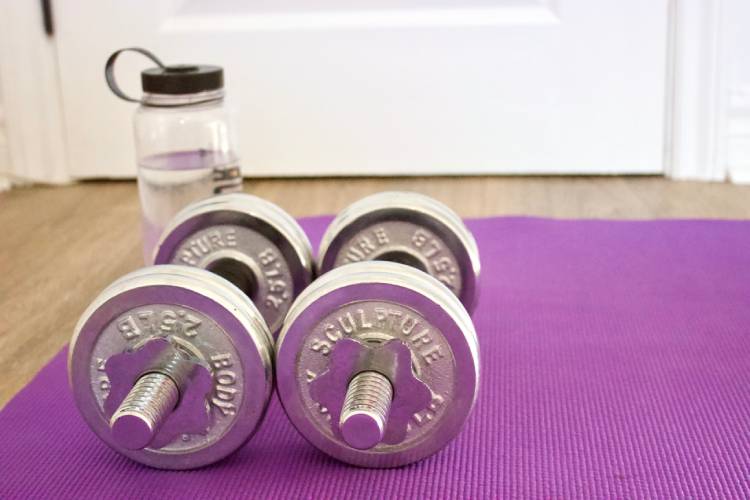
Several Canadians opted to workout from home during the closures of gyms. Photo by Olivia Piché.
Like Hotson, Bélanger continues to benefit in numerous ways from her physical activity but admitted she may have started her fitness journey a little too intensely. Bélanger emphasizes the importance of incorporating a sustainable exercise plan as opposed to one that threatens to demotivate you once you take a day off.
“I think the best is adapting it to our daily lives. It may not [feel like] that much but at least it allows you to be able to keep that rhythm,” she says.
Dr. Bacon stresses it’s never too late to incorporate small ways to be active in our daily lives to benefit from health advantages.
“The much better strategy is to work [physical activity] into regular schedules and do things you enjoy and try to add more and more elements as you go,” he says.
Bacon encourages body movement, no matter how small. He believes consistency is key, no matter when you started or what level you are at.
“There will be some days where you don’t have time or you don’t feel like it and that’s okay. It’s totally okay to have those days,” he says. “You’re not going to miss out by missing just one day every now and again. Forgive yourself and tomorrow get back on the horse.”
In order to make everyday active habits achievable and sustainable, Bacon emphasizes the importance of finding things that are enjoyable. Loving the physical activity Hotson does has permitted her to continue to live a steady and consistent active lifestyle.
“My typical stress outlet [has always been] being active and the benefits of being outside regardless of the weather,” says Hotson. “There’s almost a certain stimulation that you get from being outside and seeing different sites that I love.”
How much do you know about the changes the COVID-19 pandemic has brought to the exercise routines of Canadians? Media by Olivia Piché.
